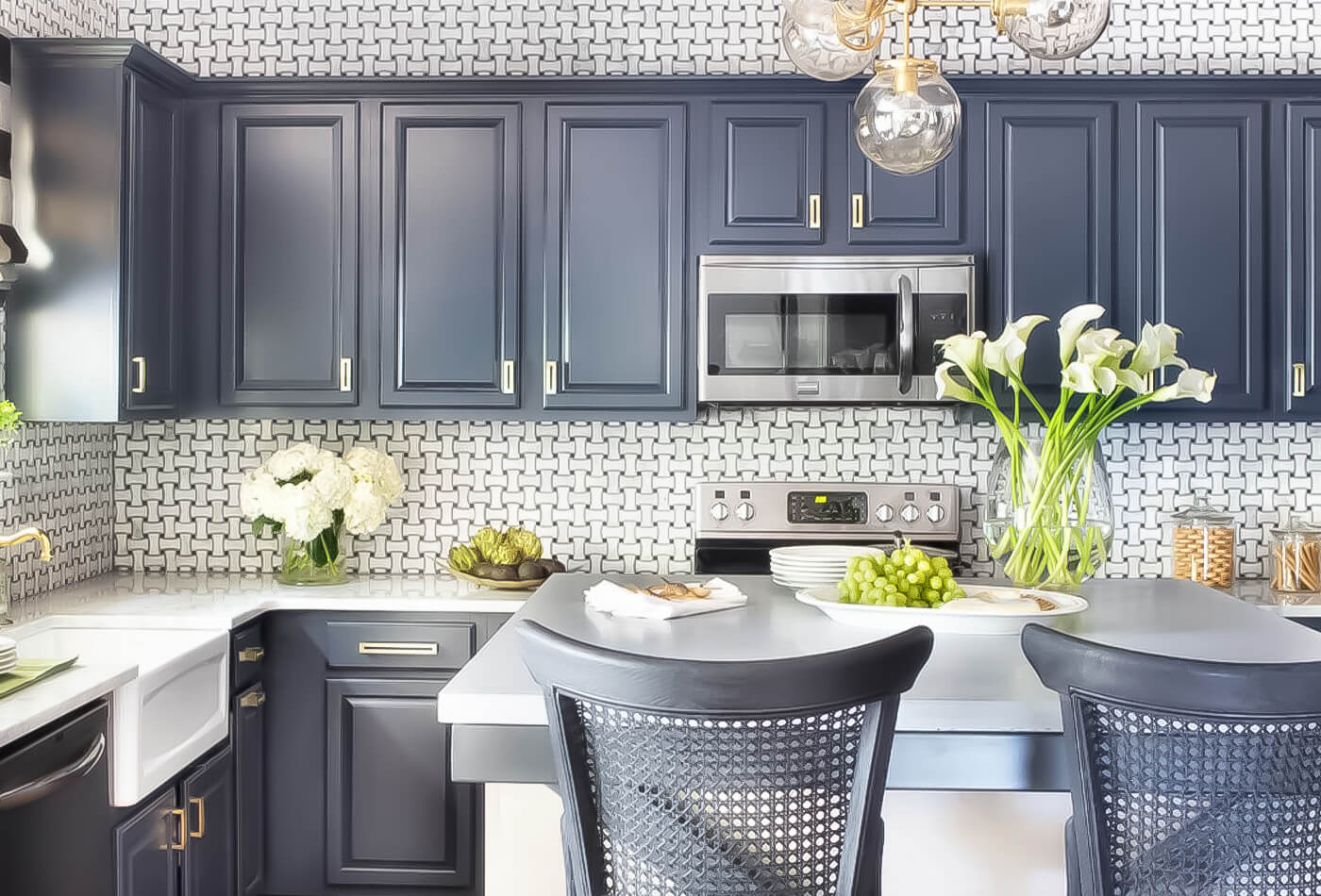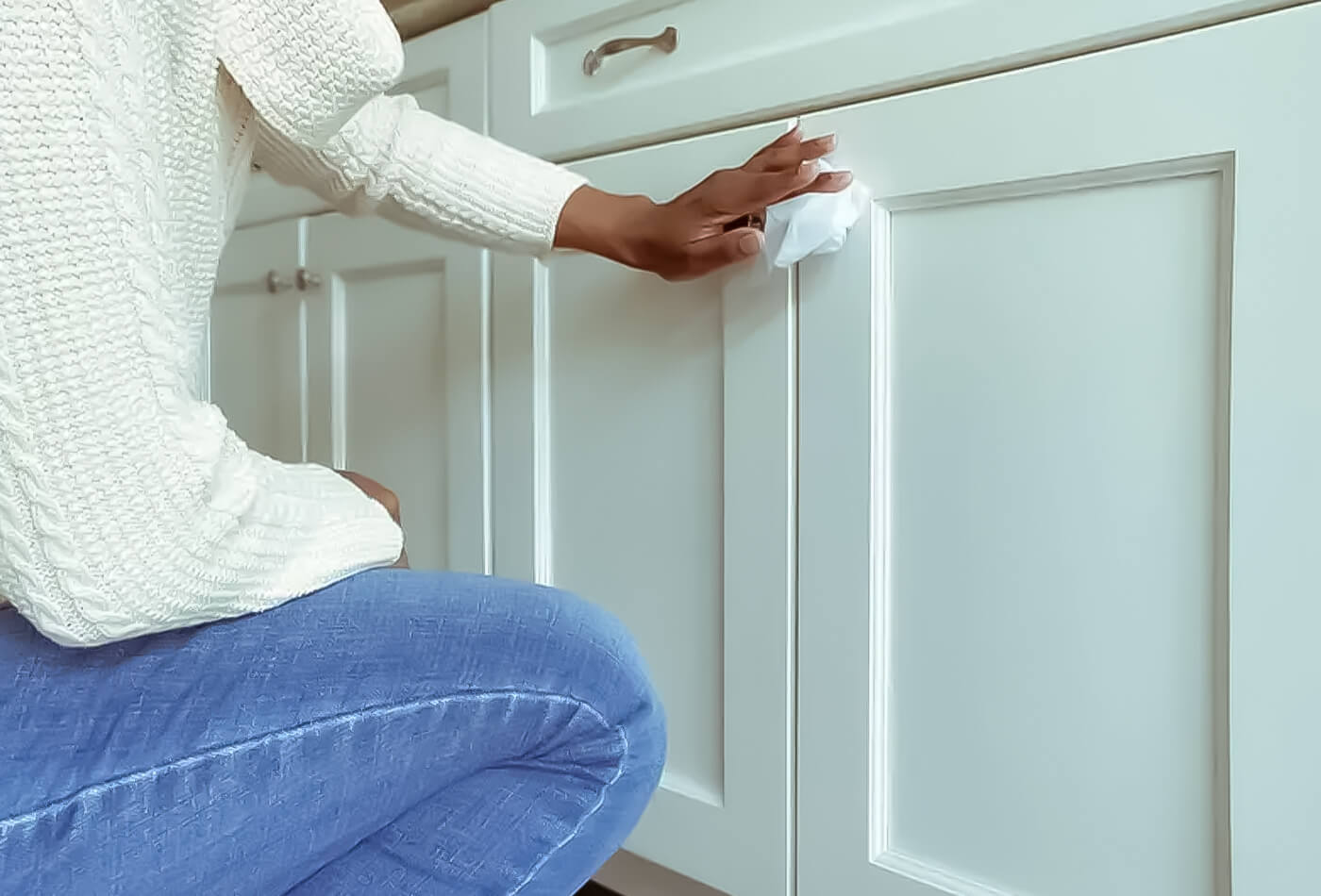How to Paint Kitchen Cabinets Like a Pro in Simple Steps?
How to Paint Kitchen Cabinets Like a Pro in Simple Steps?

"Paint kitchen cabinets" is just a simple way to give your kitchen a fresh, new vibe without spending a fortune. It's all about removing the doors, giving them light sand, and adding a couple of smooth coats of kitchen cupboard paint. With the proper prep, you'll be amazed at how new they look! It's one of those DIY tricks that can completely transform your space and save you some cash. If you're thinking, "I'd rather have a pro to paint my kitchen cabinets," or need advice on the best cabinet paint, help is just around the corner!
Top 7 Must-Try Steps To Paint Kitchen Cabinets:

Step 1: Preparing Your Cabinets for Painting
Before painting, clean them thoroughly with a degreasing solution, as a clean surface makes all the difference in a smooth, lasting finish.
Taking off the doors and drawers gives you easy access to every surface and helps you avoid drip marks. It's much easier to paint flat surfaces!
Step 2: #Sanding Cabinets for a Smooth Finish
Lightly sand all surfaces to remove any old finish and help the primer stick better.
Exceptional grit sandpaper (like 220 grit) is perfect for this. Don't bypass this component; it'll make your paint job look superb and effortless.
Don't press too hard with the sandpaper! A light touch is all you need.
Step 3: #Priming Your Cabinets
It creates an even base and helps the paint bond better to the surface, so your cabinets look fabulous and last longer.
Look for a high-adhesion primer made explicitly for cabinets. This type of primer is designed to grip onto slick surfaces like laminate or finished wood.
Step 4: # Painting Your Kitchen Cabinets with Precision
For large surfaces, foam rollers are great because they don't leave brush strokes. Use a brush for corners and edges, and take your time!
Apply thin coats, and don't rush. Thin, even layers are the secret to a smooth finish.
Let each coat dry thoroughly before applying the next. This attention to detail is significant when you decide to paint kitchen cabinets.
It'll make all the difference in achieving that flawless look!
Step 5: #Applying a Second Coat for a Professional Look
Patience can pay off right here! Wait at least four hours before applying the second coat, and make sure the primary one is dry.
The second coat gives your cabinets that rich, even colour and smooth finish.
Step 6: #Reassembling Cabinets and Adding Hardware
Once everything is dry, it's time to reassemble. Take your time reattaching doors and drawers to make sure everything lines up.
New hardware can make a big difference! Consider swapping out your old knobs and pulling for something modern or unique to give your kitchen that final touch.
Step 7: #Cleaning and Caring for Painted Cabinets
Avoid harsh chemicals; they can ruin that beautiful finish you just created. Instead, grab a gentle soap and warm water, and give those "paint kitchen cabinets" a light wipe down.
Paint Kitchen Cabinets are durable. However, they go an extended way. Use moderate, nonabrasive cleaners to keep them looking clean.
How to Paint Kitchen Cabinets?

Two major problems that emerge when painting kitchen cabinets involve the doors and drawers.
The first issue is not removing the doors and drawers. Many people make the mistake of thinking it will be easier to paint doors without removing them from the frames.
It is actually far more time-consuming and difficult this way. It's hard to cut around the hinges. If you use a sprayer, you must carefully cover all the hinges with tape.
You will probably find that everything needs two coats or even a few coats. Problems often appear if you only apply thin coats or don't wait until surfaces are completely dry before applying another coat.
It's much easier to paint kitchen cabinets when you remove the hinges of the cabinet doors with a drill.
You can also pull drawers out on their slider tracks. Next, you need to set up a separate space to spray or use rollers on the doors on a flat surface.
Common Mistakes to Avoid When Paint Kitchen Cabinets:
Tip 1: Avoid Paint Drips and Uneven Coats. When portraying kitchen shelves, it is clean to use too much paint immediately.
Tip 2: Making use of a couple of skinny coats is higher; it prevents drips and streaks, making sure an easy, expert look.
Tip 3: Correct Cabinet Painting Mistakes promptly. If you notice any mistakes whilst the paint is wet, don't panic!
Tip 4: Just use a smooth brush to ease them out earlier than they dry. Don’t underestimate the importance of this step.
Tip 5: You want to give your paint a very smooth and even surface to stick to so your paint job lasts longer. Patience is key here! Be extra careful after painting kitchen cupboards.
Conclusion:
Portraying kitchen cabinets is an easy, price-powerful manner to transform the coronary heart of your house. With just a little prep, some coats of paint, and some patience, you could provide your kitchen with a fresh, new look. Whether you're after a present-day vibe or a relaxed feel, painted kitchen cabinets convey persona and fashion without the need for a complete remodel. Plus, it's a project you can customise exactly to your taste. Remember, with the right tools and steps, it's a fun and satisfying DIY! And if you need support, experts are always available to help make your "paint kitchen cabinets" vision come to life! And hey, if you get stuck, there are tons of experts ready to help you out. So, roll up those sleeves, embrace MAI, make it Artistic and Inspiring and get ready to unleash your creativity!
#HowtoPaint? #PaintKitchenCabinets #Pro #HomeImprovement #HomeDesign #Home

Comments
Post a Comment